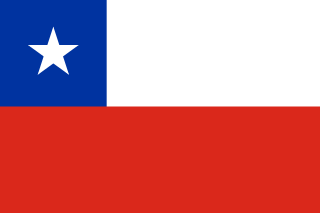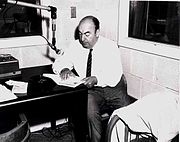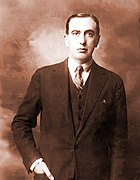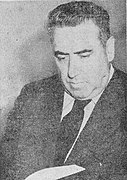Related Research Articles

Lucila Godoy Alcayaga, known by her pseudonym Gabriela Mistral, was a Chilean poet-diplomat, educator and humanist. In 1945 she became the first Latin American author to receive a Nobel Prize in Literature, "for her lyric poetry which, inspired by powerful emotions, has made her name a symbol of the idealistic aspirations of the entire Latin American world". Some central themes in her poems are nature, betrayal, love, a mother's love, sorrow and recovery, travel, and Latin American identity as formed from a mixture of Native American and European influences. Her portrait also appears on the 5,000 Chilean peso bank note.

Vicente García-Huidobro Fernández was a Chilean poet born to an aristocratic family. He promoted the avant-garde literary movement in Chile and was the creator and greatest exponent of the literary movement called Creacionismo ("Creationism").
Spanish-language literature or Hispanic literature is the sum of the literary works written in the Spanish language across the Hispanic world. The principal elements are the Spanish literature of Spain, and Latin American literature. There is also American literature in Spanish and Philippine literature in Spanish, as well as literature from some other parts of the world.
Latin American poetry is the poetry written by Latin America authors. Latin American poetry is often written in Spanish, but is also composed in Portuguese, Mapuche, Nahuatl, Quechua, Mazatec, Zapotec, Ladino, English, and Spanglish. The unification of Indigenous and imperial cultures produced a unique and extraordinary body of literature in this region. Later with the introduction of African slaves to the new world, African traditions greatly influenced Latin American poetry. Many great works of poetry were written in the colonial and pre-colonial time periods, but it was in the 1960s that the world began to notice the poetry of Latin America. Through the modernismo movement, and the international success of Latin American authors, poetry from this region became increasingly influential.
Latin American literature consists of the oral and written literature of Latin America in several languages, particularly in Spanish, Portuguese, and the indigenous languages of the Americas. It rose to particular prominence globally during the second half of the 20th century, largely due to the international success of the style known as magical realism. As such, the region's literature is often associated solely with this style, with the 20th century literary movement known as Latin American Boom, and with its most famous exponent, Gabriel García Márquez. Latin American literature has a rich and complex tradition of literary production that dates back many centuries.

Volodia Teitelboim Volosky was a Chilean communist politician, lawyer, and author.

Ricardo Eliécer Neftalí Reyes Basoalto, better known by his pen name and, later, legal name Pablo Neruda, was a Chilean poet-diplomat and politician who won the Nobel Prize for Literature in 1971. Neruda became known as a poet when he was 13 years old, and wrote in a variety of styles, including surrealist poems, historical epics, overtly political manifestos, a prose autobiography, and passionate love poems such as the ones in his collection Twenty Love Poems and a Song of Despair (1924).
Antonio Alfonso Cisneros Campoy was a Peruvian poet, journalist and academic. He was born in Lima on 27 December 1942 and died there of lung cancer on 6 October 2012, aged 69.

Copper Canyon Press is an independent, non-profit small press, specializing in the publication of poetry and located in Port Townsend, Washington. Since 1972, the Press has published poetry exclusively.

Eduardo Anguita Cuéllar was a Chilean poet, who was awarded the Chilean National Prize for Literature in 1988.

Chilean literature refers to all written or literary work produced in Chile or by Chilean writers. The literature of Chile is usually written in Spanish. Chile has a rich literary tradition and has been home to two Nobel prize winners, the poets Gabriela Mistral and Pablo Neruda. It has also seen three winners of the Miguel de Cervantes Prize, considered one of the most important Spanish language literature prizes: the novelist, journalist and diplomat Jorge Edwards (1998), and the poets Gonzalo Rojas (2003) and Nicanor Parra (2011).

Gregory Dawes is a distinguished professor of Latin American Studies at North Carolina State University. He has written on Latin American studies and literary theory and is the editor of A Contracorriente, an online academic journal dedicated to approaching social history and Latin American literature from a left-wing perspective, and managing editor of Editorial A Contracorriente, the Journal's publishing spin-off.

Pablo de Rokha was a Chilean poet. He won the Chilean Premio Nacional de Literatura in 1965 and is counted among the four greats of Chilean poetry, along with Pablo Neruda, Vicente Huidobro and Gabriela Mistral. De Rokha is considered an avant-garde poet and an influential figure in the poetry scene of his country.

Raúl Zurita Canessa is a Chilean poet. He won the Chilean National Prize for Literature in 2000.

Selva lirica is an anthology published in 1917 by the Chilean Julio Molina Nuñez.
Juan Andrés Morales Milohnic is a Chilean poet and writer. He has a PhD in literature and is a full professor of the University of Chile, and a member of Academia Chilena de la Lengua. He won the Pablo Neruda National Prize in 2001.

The Coast of Poets is a cultural space in the Valparaíso Region of Chile, named for four world-renowned Chilean poets.

The phrase land of poets is commonly used to describe Chile because of its highly-valued poetry tradition. The phrase is most often associated with the fact that Chilean poets have twice obtained Nobel Prize in Literature for their works: Gabriela Mistral in 1945 and Pablo Neruda in 1971. According to the Austral University of Chile academician Oscar Galindo, the concept of Chile as the "land of poets" is mostly foreign.

Altazor o el viaje en paracaídas, or simply Altazor, is the magnum opus of Chilean poet Vicente Huidobro, published in Madrid in 1931.

Marina Latorre Uribe is a Chilean writer, journalist and gallerist.
References
- ↑ "Grandes Poetas chilenos del siglo veinte" www.elnaveghable.cl José Martínez Fernández November 18, 2008, retrieved October 07,2013
- ↑ The Nobel Prize in Literature 1971 April 4, 2011 Nobelprize.org retrieved October 8, 2013
- ↑ The Nobel Prize in Literature 1945 April 4, 2011 Nobelprize.org retrieved October 8, 2013
- ↑ La amiga de Darío y Sandino laprensa.com.ni December 3, 2012 retrieved October 02, 2013
- ↑ TERCETOS DANTESCOS A CASIANO BASUALTO - Pablo de Rokha poems www.poemas-del-alma.com
- ↑ El Neruda de Huidobro René De Costa Universidad de Chile retrieved October 15, 2013



